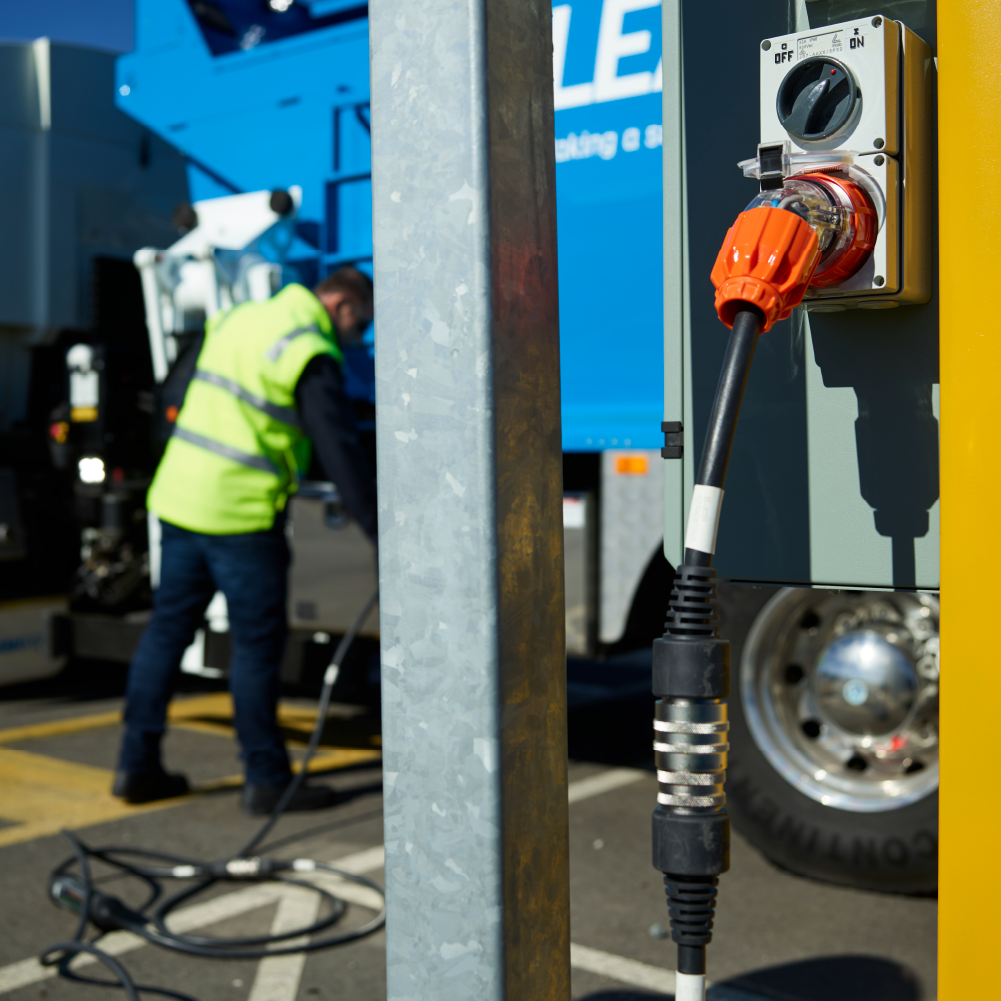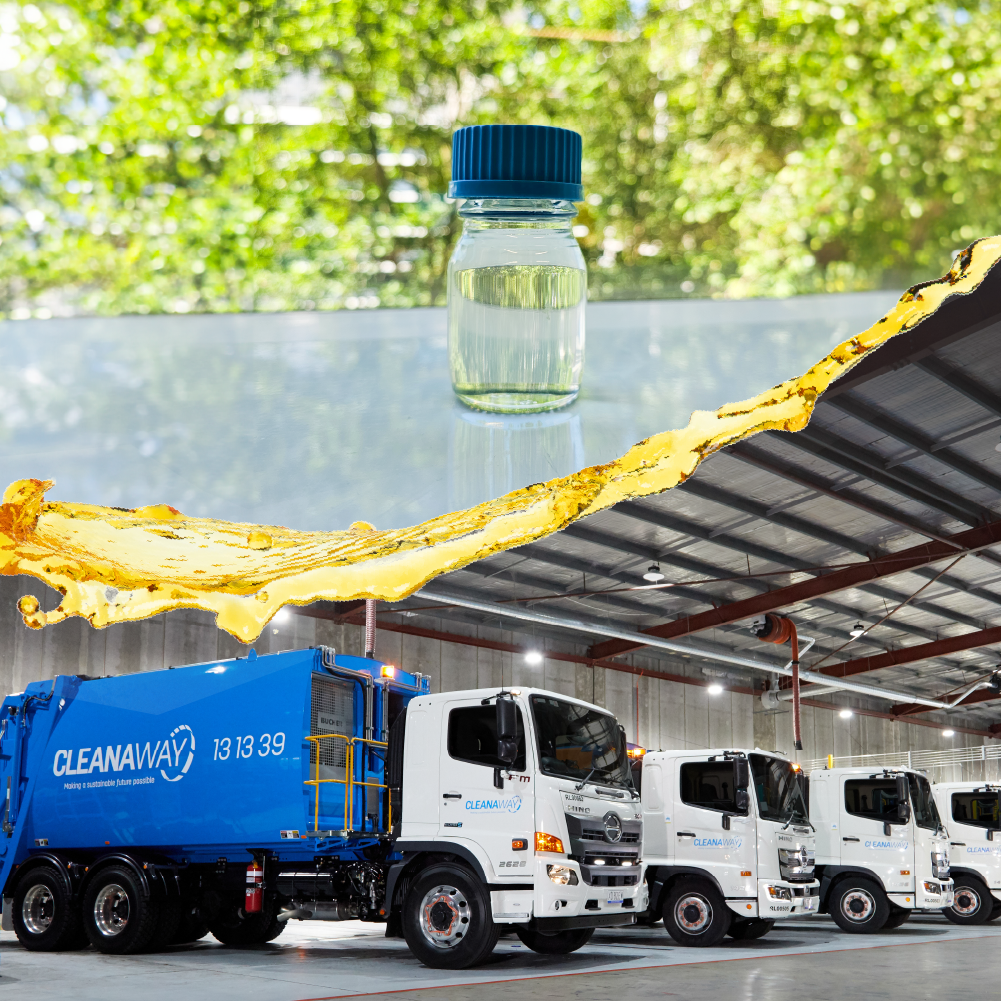Driving towards making a sustainable future possible
Cleanaway has an extensive network of vehicles that keep waste management operations moving across Australia. Over the past several years significant progress has been made to improve safety, operational efficiency and compliance. Our framework of fleet management is integrated through the DriveSafe system giving us real time visibility of our vehicles. Safety of our people and the community remains an absolute foundation. Technology is an enabler of this, supported by Cleanaway’s HSE vision and 5-year roadmap.
Currently our fleet is mostly powered by diesel, making it our second largest contributor to our greenhouse gas emissions. With one of Australia’s largest fleets, we’re pursuing a range of solutions to incrementally decarbonise, working with local and international partners.
Some of the initiatives we are exploring as part of our fleet decarbonisation journey include battery powered electric vehicles, HVO100 renewable diesel and the introduction of hydrogen vehicles, which we outline in more detail below.
Battery powered electric vehicles
In 2019 we introduced our first battery powered side lift vehicle that remains an important part of our decarbonisation journey for light weight vehicles. We currently have an active electric vehicle servicing our Newcastle municipal market and we continue to invest in battery electric yellow gear such as forklifts at a number of our recycling facilities.

HVO100 renewable diesel
HVO100 renewable diesel is a fantastic option for Australia’s heavy vehicle industry as it can be used as a “drop-in” alternative to fossil diesel which means you don’t need to modify the vehicle, the engine or the refueling infrastructure. HVO100 reduces greenhouse gas emissions by up to 90% compared to fossil fuel, and also reduces the odour and smoke emitted.
Hydrogen vehicles
Key challenges in using hydrogen as a fuel source include the low availability of hydrogen and hydrogen vehicles, and limited refuelling infrastructure. However, given the role hydrogen may play in the longer term, we have procured two hydrogen fuel cell heavy vehicles for use in the Viva Energy New Energies Service Station Project, in which we are a foundation partner.
Keeping drivers, community and environment safe
Cleanaway trucks are meticulously cared for and outfitted with the latest in logistic software and in-vehicle tracking systems, powered by energy-efficient electric engines. Learn more below.

Cleanaview
Our market-leading Cleanaview portal gives customers and councils real-time data to resolve issues quickly and effectively. From in-hopper cameras for recording bin issues to online service requests and fast customer portal resolution, Cleanaview empowers our customers and councils, offering greater insight and visibility.

Road safety improvements with Mobileye
With our teams operating heavy vehicles in many different environments, driver distraction is a critical health and safety risk, and the safety of our employees and the communities in which they operate is our highest priority.
We have installed Mobileye, a new safety system, in 3,000 Cleanaway heavy vehicles, including waste trucks, tankers, prime movers and light vehicles. Mobileye consists of a forward-facing vision sensor placed on the inside of the windscreen, along with a visual display unit on the dashboard which faces the driver.
Forward collision warning of an imminent collision with a vehicle up to 2.7 seconds before
Headway monitoring and warning if the driver gets too close to the vehicle in front
Speed limit indicator and traffic sign recognition to notify of new speed limits or if the limit is exceeded
Lane departure warning of an unintentional deviation from the driving lane
Pedestrian and cyclist collision warning

